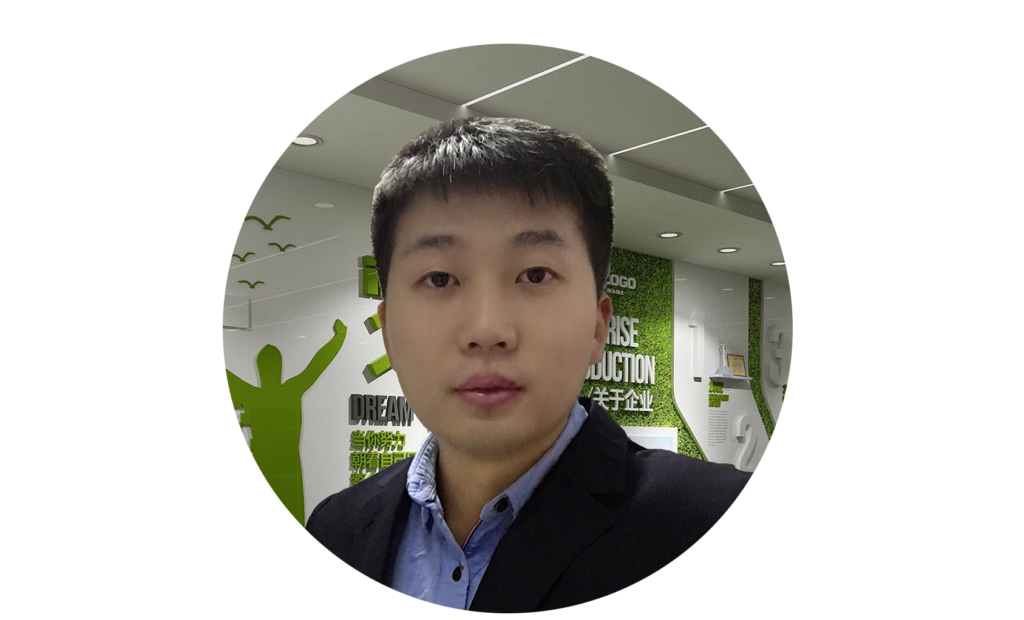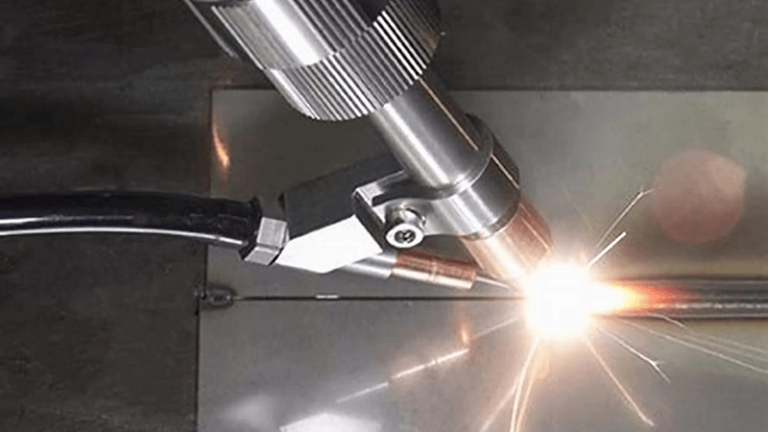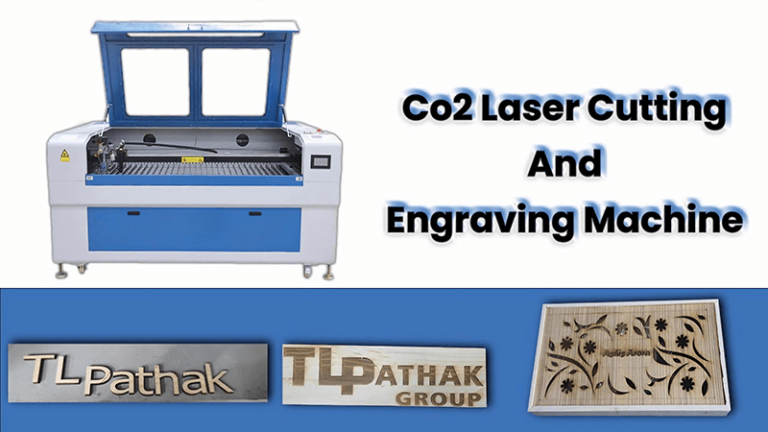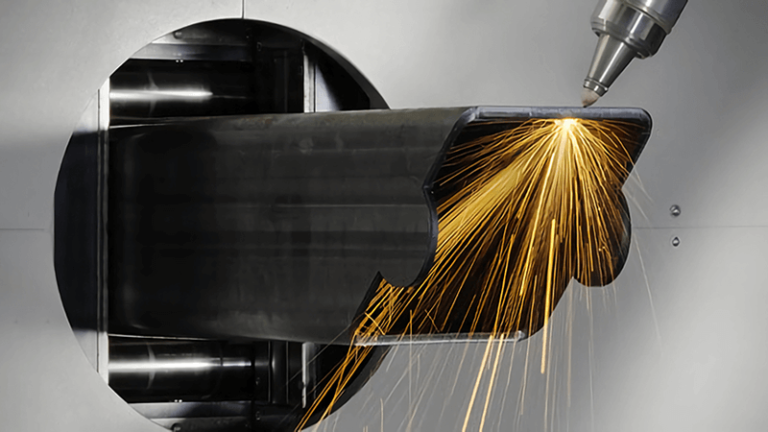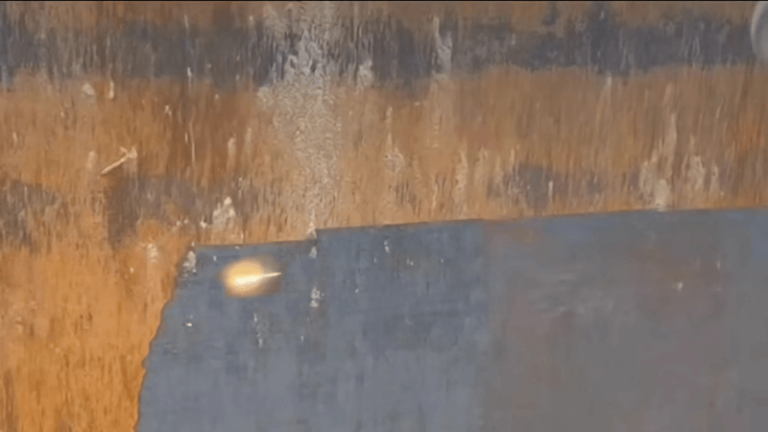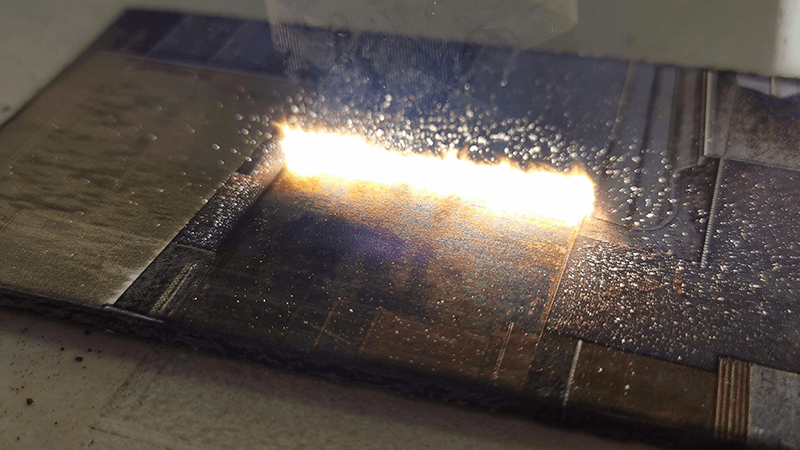
When it comes to removing rust, many industries face a persistent challenge. Rust on metal surfaces can not only affect the aesthetic of machinery or equipment but also compromise their functionality. Traditional methods like sandblasting or chemical treatments are messy, time-consuming, and often inefficient. But there's a solution that's faster, cleaner, and more precise: laser rust removal.
Laser rust removal is a game-changer for those looking to eliminate rust effectively without damaging the underlying material. Using focused laser beams, this technology targets rust and contaminants on metal surfaces, evaporating them without causing harm to the base material. It's a high-precision process that offers significant benefits over conventional rust removal methods.
The key to efficient laser rust removal lies in understanding how it works and applying best practices. I'll dive into the details, but before we get there, let’s explore why laser technology is quickly becoming the go-to method for rust removal.
What is Laser Rust Removal and How Does it Work?
Laser rust removal uses a high-powered laser beam to clean metal surfaces. The laser’s energy is absorbed by the rust, causing it to heat up and vaporize. Meanwhile, the unaffected metal remains cool, preserving the integrity of the surface. This method allows for precise control, meaning you can clean intricate areas or delicate parts without the risk of damaging them.
What sets laser rust removal apart from traditional methods is its minimal environmental impact. Unlike sandblasting, which creates dust, or chemical cleaning, which releases harmful fumes, laser cleaning produces no waste and requires no harmful substances. It’s an eco-friendly option for industries that value sustainability.
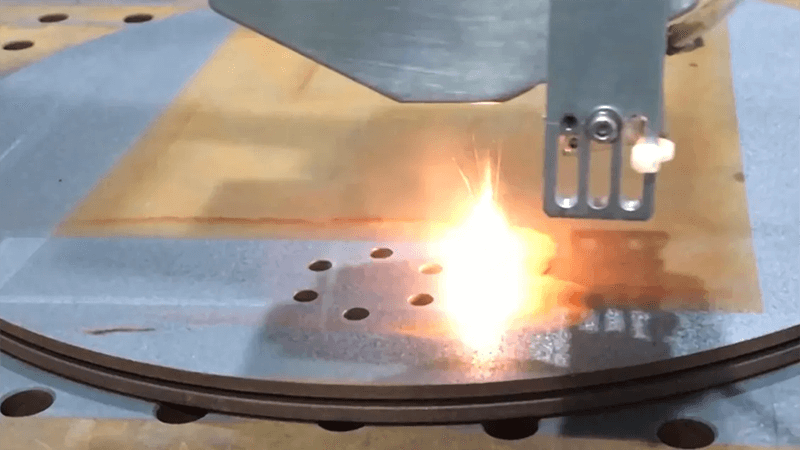
How Laser Rust Removal Works
Laser rust removal operates on the principle of laser ablation, where a focused laser beam is directed at the rusted surface. The energy from the laser is absorbed by the rust, causing it to rapidly heat up, expand, and detach from the metal. This process can be performed using either pulsed or continuous wave lasers, each suitable for different applications:
- Pulsed Lasers: Emit short bursts of high-energy light, ideal for precision cleaning tasks.
- Continuous Wave Lasers: Provide a steady beam, effective for larger areas but require careful management to avoid overheating the substrate.
The efficiency of this method lies in its ability to selectively target rust without affecting the integrity of the underlying metal, making it suitable for intricate designs or delicate components.
Pulsed vs. Continuous Wave (CW) Laser Cleaning Machines: Which Is Right for You?
Laser cleaning technology has become a widely adopted solution for removing contaminants, rust, and coatings from surfaces. Two popular methods of laser cleaning are pulsed laser cleaning and continuous wave (CW) laser cleaning, each offering unique benefits depending on the cleaning task. Here's a breakdown of their differences and applications:
-
Pulsed Laser Cleaning
Pulsed laser cleaning works by emitting laser energy in short, high-intensity bursts or pulses. This is similar to striking a surface repeatedly with a hammer, where each pulse delivers a powerful energy peak that rapidly heats and removes contaminants. The advantages of this method include:- Effective for Hard, Stubborn Contaminants: Pulsed lasers are ideal for removing hard, tightly bonded contaminants, such as rust, thick paint layers, and oxides from metal surfaces.
- Minimal Thermal Impact on Substrate: Since pulses are brief and spaced apart, the heat generated during cleaning does not have enough time to significantly affect the substrate, making this method suitable for sensitive materials.
- Precision and Control: The high-intensity bursts allow for more precise control, making it easier to clean detailed or intricate surfaces without damaging the base material.
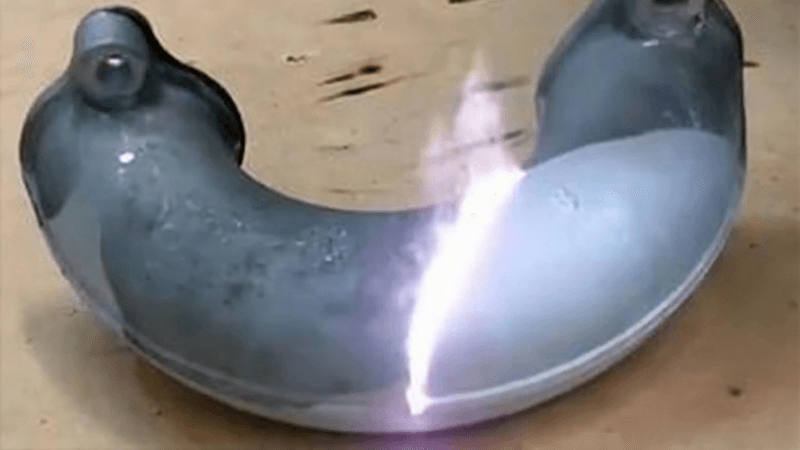
- Continuous Wave (CW) Laser Cleaning
In contrast, CW laser cleaning involves the continuous emission of laser energy. The laser beam remains on the surface for an extended period, delivering a constant heat flow. This process is more similar to using a heated stream of air to melt or vaporize contaminants. The characteristics of CW laser cleaning include:
- Best for Soft, Easily Vaporized Contaminants: CW lasers excel at cleaning materials that are softer or easier to vaporize, such as organic materials or light oxidation.
- Large Area, Fast Cleaning: This method is ideal for large surface areas or applications where quick cleaning is needed, such as in industrial-scale settings.
- Higher Thermal Impact: Continuous heating means that CW laser cleaning can sometimes cause significant thermal effects on the base material. As a result, it’s essential to adjust the cleaning parameters carefully to avoid damaging the substrate, particularly when working with heat-sensitive materials.
Key Differences:
-
Laser Emission: Pulsed lasers emit short bursts of energy, while CW lasers emit a continuous stream of energy.
-
Efficiency for Hard Contaminants: Pulsed lasers are more effective for removing hard, tightly bonded contaminants, whereas CW lasers are better for cleaning softer or more easily vaporized substances.
-
Thermal Impact: Pulsed lasers cause less thermal impact on the substrate, making them suitable for delicate materials, while CW lasers may cause more heat damage to the base material if not carefully controlled.
-
Speed: CW lasers are generally faster at cleaning large areas, making them ideal for industrial-scale operations.
Applications
- Pulsed Laser Cleaning: Typically used in metalworking, aerospace, and automotive industries, where stubborn rust or paint removal is needed without damaging the underlying surface.
- CW Laser Cleaning: More suited for applications requiring quick cleaning of larger surfaces, such as in construction, environmental restoration, and certain industrial applications.
Both methods offer unique advantages and are best suited to specific tasks. The choice between pulsed and CW laser cleaning depends largely on the material being cleaned, the type of contaminant, and the desired cleaning speed and precision.
Laser rust removal is faster and cleaner than traditional methods like sandblasting.True
Laser rust removal is faster, cleaner, and more precise compared to traditional methods like sandblasting, as it doesn't create dust or mess.
Pulsed lasers are ideal for removing soft, easily vaporized contaminants.False
Pulsed lasers are most effective for hard, tightly bonded contaminants, not soft materials.
How Do Pulsed and Continuous Wave (CW) Laser Cleaning Machines Differ?
Laser cleaning technology offers two main types: pulsed and continuous wave (CW) laser cleaning. While both methods utilize laser energy to remove contaminants from surfaces, their mechanisms and results differ significantly.
- Energy Output and Cleaning Efficiency
- Pulsed Laser Cleaning: Pulsed lasers release energy in short bursts, allowing for high-intensity impacts over very brief periods. This makes pulsed lasers highly effective at removing stubborn contaminants, such as heavy rust, thick paint layers, or hard particles attached to metal surfaces. The high energy delivered in these short pulses generates intense shockwaves that dislodge debris efficiently. Because the duration of the energy release is brief, the heat effect on the substrate is minimal, reducing the risk of thermal damage to the material. The result is a high-quality surface with minimal change in roughness or physical properties.
- Continuous Wave (CW) Laser Cleaning: CW lasers provide a continuous flow of energy, gradually increasing the temperature of contaminants until they melt or vaporize. This method is well-suited for cleaning softer materials, such as oils, waxes, or thin organic coatings. However, due to the continuous nature of energy output, CW lasers tend to affect a larger heat-affected zone. This can lead to overheating of the substrate material, potentially causing thermal damage such as deformation or surface oxidation. The cleaning results may not be as precise as pulsed laser cleaning, with more noticeable changes in surface quality and roughness.
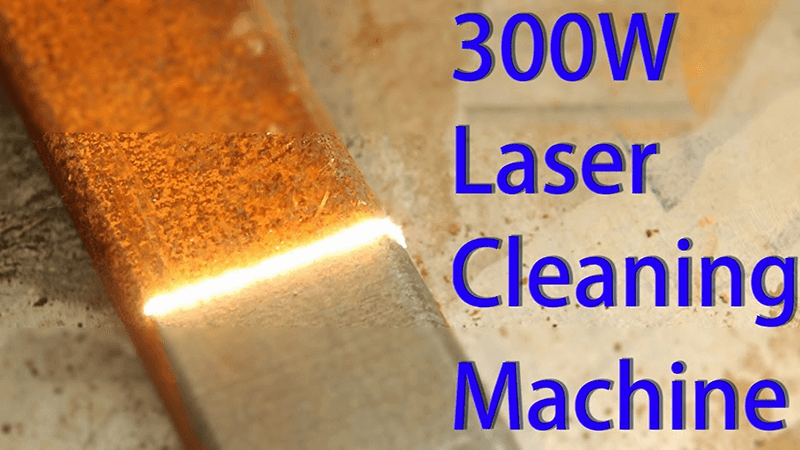
-
Surface Damage and Quality
- Pulsed Laser Cleaning: Since the energy is delivered in short pulses, the thermal impact is limited, protecting the underlying material from excessive heat buildup. This leads to a cleaner, smoother surface with minimal risk of damage. It's especially advantageous when cleaning delicate or thin materials where preserving surface integrity is critical.
- Continuous Wave (CW) Laser Cleaning: The continuous output of energy increases the thermal effect on the material, which can cause greater surface oxidation, deformation, or other thermal-related damage. As a result, the final surface may be rougher or compromised, especially on sensitive substrates.
-
Best Applications
-
Pulsed Laser Cleaning: Ideal for removing heavy rust, thick coatings, and hard-to-remove contaminants from hard surfaces like metals and ceramics. It’s also useful for applications requiring precise control over the heat effect, such as cleaning high-precision parts or delicate materials.
-
Continuous Wave (CW) Laser Cleaning: Best suited for cleaning softer, heat-sensitive contaminants such as oils, grease, wax, and thin organic coatings. It's commonly used in applications where the primary goal is to remove light surface contamination without affecting the underlying material.
-
-
Speed and Precision
- Pulsed Laser Cleaning: The high intensity and short duration of pulses make pulsed lasers ideal for quick, efficient cleaning of challenging surfaces. The process can be faster for tough contaminants but may require careful adjustment to ensure optimal results without damaging the substrate.
- Continuous Wave (CW) Laser Cleaning: CW lasers typically work more slowly compared to pulsed lasers because the gradual heating process takes longer to effectively melt or vaporize contaminants. While this can be effective for softer contamination, it may not offer the same speed or precision when dealing with more stubborn dirt or rust.
This table highlights the key differences between pulsed and continuous wave laser cleaning in terms of energy output, cleaning efficiency, surface quality, and best use cases.
| Feature | Pulsed Laser Cleaning | Continuous Wave (CW) Laser Cleaning |
|---|---|---|
| Energy Output | Short bursts of high-intensity energy | Continuous flow of energy |
| Cleaning Efficiency | Highly effective at removing heavy rust, thick paint, and stubborn contaminants | Best for cleaning softer contaminants like oils, waxes, and thin coatings |
| Heat Impact on Substrate | Minimal thermal impact due to brief pulse duration | Larger heat-affected zone, potentially causing thermal damage |
| Surface Quality | High-quality surface, minimal change in roughness | Surface may be rougher due to potential thermal damage |
| Best for | Heavy contaminants, hard surfaces, delicate materials requiring precision | Softer contaminants, heat-sensitive materials, organic coatings |
| Cleaning Speed | Faster for tough contaminants, but may require adjustment for precision | Slower due to gradual heating and melting/vaporization process |
| Risk of Surface Damage | Low risk, protects substrate integrity | Higher risk of oxidation, deformation, and surface alteration |
| Applications | Metal cleaning (rust, paint removal), precision parts | Soft material cleaning (grease, oils, waxes, thin coatings) |
Pulsed Laser Cleaning Technology in Various Industries: Which Industries Are Most Suitable for Pulsed Laser Cleaning?
Pulsed laser cleaning technology, known for its precision, efficiency, and non-damaging characteristics, is becoming the preferred cleaning solution across multiple industries. As industrial technology advances, this method is increasingly applied in sectors that require high standards of cleaning precision and surface protection. Below are the industries where pulsed laser cleaning is most effective:
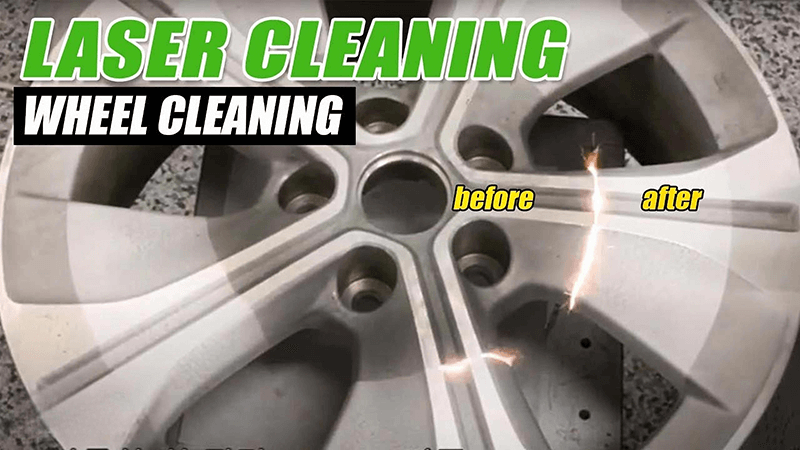
-
Electronics and Semiconductor Industry
- Circuit Board Cleaning: The structures of circuit boards in electronic devices are complex and their components are delicate. Pulsed laser cleaning effectively removes solder residues, oils, dust, and other contaminants without causing thermal damage or mechanical impact on small electronic components or circuits, ensuring the performance and reliability of the circuit boards.
- Chip Manufacturing and Packaging: In chip manufacturing, cleaning the surface of silicon wafers from photoresists, oxides, and other contaminants is essential. Pulsed laser cleaning provides high-precision cleaning, effectively removing sub-micron contaminants while preserving the chip structure and performance.
-
Automotive Manufacturing and Maintenance Industry
- Engine Part Cleaning: Automotive engine components such as cylinder blocks, cylinder heads, and pistons accumulate oil, metal shavings, and carbon deposits during production. Pulsed laser cleaning effectively removes these contaminants without damaging the parts' surfaces, ensuring the assembly accuracy and performance of the engine.
- Automotive Component Repair: For worn or corroded auto parts such as wheel hubs, brake discs, and crankshafts, pulsed laser cleaning can remove rust, oils, and oxide layers, providing a clean surface for subsequent repairs or reprocessing.
-
Aerospace Industry
- Aircraft Body and Component Cleaning: Aircraft components such as fuselage, wings, and engines are often exposed to oil, dust, and corrosion. Pulsed laser cleaning offers a quick and efficient way to remove these contaminants, without damaging the surface coatings or materials of the aircraft.
- Aerospace Engine Maintenance: Aircraft engine parts, including turbine blades and combustion chambers, require regular cleaning and maintenance. Pulsed laser cleaning can remove high-temperature oxides and carbon deposits, improving the engine's thermal efficiency and reliability.
-
Mold Manufacturing and Processing Industry
- Mold Cleaning and Maintenance: Molds in production processes can accumulate plastic, rubber, oils, and other contaminants, which affect their lifespan and product quality. Pulsed laser cleaning can quickly and thoroughly remove these contaminants without damaging the mold surface, extending the mold's service life.
- Precision Mold Processing: For precision molds such as optical or electronic molds, pulsed laser cleaning can clean the mold surface before processing, removing tiny impurities and contaminants to improve the mold's processing precision and surface quality.
-
Cultural Heritage Conservation and Restoration
- Artifact Cleaning: Dirt, rust, and microbial stains on cultural heritage items can affect their appearance and value. Pulsed laser cleaning can be precisely controlled according to the material and contaminants of the artifacts, offering a gentle, non-damaging cleaning process that preserves the original appearance and historical information of the artifacts.
- Historical Building Restoration: Brick, wood, and metal components of historical buildings are subject to erosion and contamination over time. Pulsed laser cleaning can remove surface dirt and rust, providing a clean surface for the restoration and preservation of the building.
-
Food Processing Industry
- Food Equipment Cleaning: Pulsed laser cleaning technology effectively removes oils, residues, and other harmful substances from food processing equipment, ensuring food safety and processing efficiency. Unlike traditional cleaning methods, laser cleaning avoids chemical residues, protecting the purity of food products.
-
3D Printing and Manufacturing Industry
- 3D Printed Parts Cleaning: During 3D printing, residual powder or contaminants may remain on the printed parts' surfaces. Pulsed laser cleaning can precisely remove these remnants without damaging the fine structure of the printed materials.
Continuous Wave (CW) lasers are faster at cleaning large areas compared to pulsed lasers.True
Continuous Wave (CW) lasers excel in cleaning larger surface areas quickly, making them suitable for industrial-scale cleaning.
Laser rust removal can damage delicate materials if not carefully controlled.True
While laser rust removal is precise, if not carefully managed, it can cause thermal damage to delicate materials, particularly when using Continuous Wave lasers.
Why Choose Laser Rust Removal Over Traditional Methods?
Now that you understand the basics, let’s compare laser rust removal with other traditional methods. Sandblasting is a common technique, but it has its downsides. It creates a lot of dust and debris, which requires additional cleanup and disposal. In contrast, laser rust removal is a cleaner, dust-free process that doesn’t require extra cleaning after the job is done. Plus, laser systems are highly precise, reducing the risk of damaging surrounding areas, which is a common issue with sandblasting.
Chemical rust removers, while effective, pose environmental risks. They can release toxic fumes or require disposal of hazardous materials, making them a less favorable option for businesses aiming for sustainability. Laser technology, however, is a dry and chemical-free method that reduces your environmental footprint.
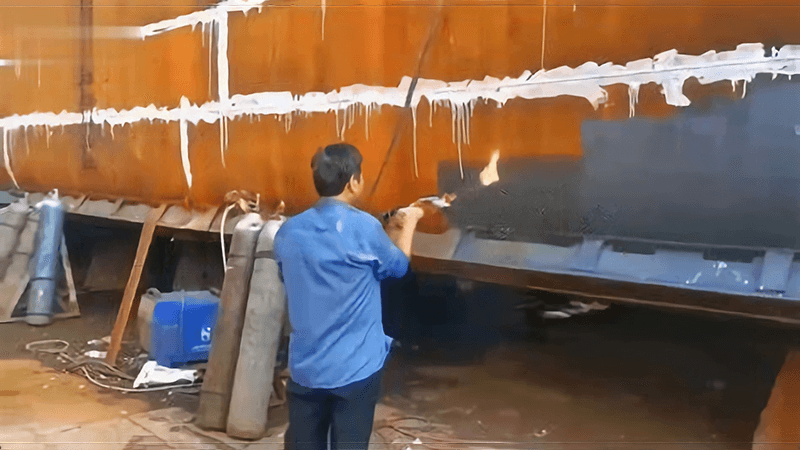
Best Practices for Laser Rust Removal
To get the best results, it’s essential to follow some best practices. First and foremost, ensure you're using the right laser cleaning machine for your needs. Different materials, rust thicknesses, and project scales require different settings. For example, a higher-powered laser is better suited for removing heavy rust from large machinery, while a lower-powered system works well for smaller, more delicate parts.
You’ll also need to adjust the speed and distance of the laser from the material. If you move the laser too quickly, it won’t have enough time to vaporize the rust. On the other hand, if you move it too slowly, you might risk damaging the metal underneath.
Safety is another important factor. Always wear protective eyewear and follow safety guidelines. Laser equipment can cause eye damage if not used properly.
Common Mistakes to Avoid When Using Laser Rust Removal
Even with the best equipment, laser rust removal can go wrong if you’re not careful. One common mistake is using the wrong settings for your material. If you don’t adjust the laser’s power and speed to match the thickness of the rust, you may end up with incomplete rust removal or, worse, damage to the underlying material.
Another mistake is rushing the process. It’s tempting to move the laser quickly to save time, but this can reduce the effectiveness of the cleaning. Take your time and ensure that the laser is properly targeting the rust.
Tips for Achieving the Best Results
To get the most out of laser rust removal, follow these tips:
- Choose the Right Machine: Make sure you select a laser cleaning system that suits your project’s scale and the material you're working with.
- Regular Maintenance: Keep your laser machine well-maintained to ensure it operates at peak efficiency.
- Adjust Settings Based on Material: Different metals and rust types may require different settings for optimal results.
- Practice: If you’re new to laser rust removal, start with small projects to get a feel for the equipment before tackling more complex jobs.
Remember, it’s always better to err on the side of caution and start with lower power settings. You can always increase the intensity if necessary, but you can’t reverse damage to the material once it’s done.
What Are the Applications of Laser Rust Removal?
Laser rust removal is used across various industries. In the automotive industry, it’s perfect for cleaning car parts, engine components, and chassis without risking damage to the delicate metal. For manufacturers, it’s an efficient way to clean machinery parts and production tools, ensuring their longevity and functionality.
Laser cleaning is also ideal for historical restoration projects. Whether it's a statue, a monument, or an antique piece of metalwork, laser rust removal ensures that delicate surfaces are cleaned without disturbing the original patina or structure. It’s a preservation technique that’s become invaluable for conservationists worldwide.
Pulsed laser cleaning is best for cleaning soft organic materials like wood.False
Pulsed lasers are better for hard contaminants like rust or paint, not soft organic materials like wood.
Laser cleaning technology produces harmful fumes, making it less eco-friendly.False
Laser cleaning is an eco-friendly process, as it produces no harmful fumes or waste, unlike chemical cleaning methods.
How to Choose the Right Laser Cleaning Machine for Your Needs?
Selecting the right laser cleaning machine is crucial for achieving the best results. First, consider the power of the laser. A more powerful system is ideal for large-scale projects, while a lower-powered system works well for precision tasks.
You also need to think about the size of the area you’ll be working on. If you need to clean a large surface, like a metal sheet, a larger laser cleaning machine might be necessary. Smaller tasks, like cleaning rust on automotive parts, might require a compact system.
Additionally, consider the portability of the machine if you plan to use it in different locations or on various projects.
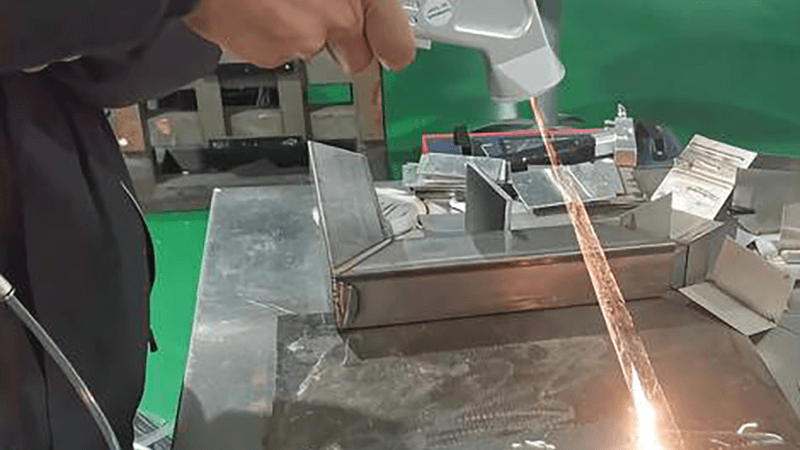
Choosing between a pulsed laser cleaning machine and a continuous laser cleaning machine requires a comprehensive consideration of the following factors:
-
Cleaning Objects
- Dirt Type: If the dirt is stubborn and hard, such as heavy rust on metal surfaces, thick paint layers, or sintered ceramic coatings, a pulsed laser cleaning machine is more suitable. Its high energy peak can generate strong impact force, effectively removing these tough contaminants. On the other hand, for softer dirt that is easy to melt or vaporize from heat, such as grease, wax, or thinner organic coatings, a continuous laser cleaning machine can achieve better results by continuously heating the material.
- Cleaning Precision Requirements: When high precision cleaning is needed, such as for cleaning electronic chips, precision optical components, or fine molds, a pulsed laser cleaning machine is the preferred choice. Its short energy pulse duration minimizes the heat-affected area, ensuring accurate removal of dirt without damaging the surrounding materials. Continuous laser cleaning machines, due to their continuous heating nature, have a larger heat-affected zone, which may cause precision loss in high-precision cleaning scenarios.
-
Material Properties of the Cleaning Object
- Thermal Sensitivity: For heat-sensitive materials, such as certain plastics, composite materials, or heat-sensitive coatings, the pulsed laser cleaning machine’s short pulse characteristics help reduce heat accumulation, lowering the risk of material damage due to overheating. Continuous laser cleaning machines, however, may cause deformation, softening, or performance changes in heat-sensitive materials due to prolonged heating. If the cleaning object is made of heat-resistant materials, like metals, the continuous laser cleaning machine can be considered, though thermal impact must still be controlled.
-
Cleaning Area and Speed Requirements
- Large Area Cleaning: If there is a need to quickly clean large surfaces, a continuous laser cleaning machine has the advantage. It can rapidly cover a wide area with its continuous energy output. A pulsed laser cleaning machine may be slower when cleaning large areas due to limitations such as pulse frequency, but it works well in scenarios where high cleaning quality is required for smaller areas.
-
Cost and Efficiency
- Equipment Cost: Generally, the prices of pulsed and continuous laser cleaning machines vary based on factors such as power and brand. However, for machines with the same power and functional requirements, pulsed laser cleaning machines tend to be more expensive due to the complexity of their technology.
- Operating Costs: The energy consumption of a pulsed laser cleaning machine is concentrated in the moment the pulse is generated, while a continuous laser cleaning machine consumes energy continuously. In long-term operations, it’s important to compare energy costs based on specific cleaning task volume and frequency. Additionally, maintenance costs for pulsed laser cleaning machines may be higher due to the complexity of the pulse system, while continuous laser cleaning machines might incur costs related to thermal management systems.
By considering these factors, you can make a well-informed decision on the type of laser cleaning machine that best suits your specific needs. You can also find more information online to help supplement this overview.
Conclusion
Laser rust removal is a modern, efficient solution that’s rapidly replacing traditional rust cleaning methods. It’s precise, eco-friendly, and effective at tackling even the toughest rust. By following best practices and avoiding common mistakes, you can achieve excellent results every time. Whether you’re in automotive, manufacturing, or restoration, investing in the right laser cleaning machine can save you time, money, and effort in the long run.
Are you ready to give laser rust removal a try? We at Kirin Laser can help you find the perfect solution for your needs—let’s make rust a thing of the past! Contact us to get your best solutions of laser cleaninng machine!
References:
- "Why Consider a Laser Light Rust Remover for Your Restoration Project?", from Kirin Laser.
- "How a Laser Light Rust Remover Can Save You Time and Money?", from Kirin Laser.
- "Laser Light Rust Remover: A Comprehensive Review", from Kirin Laser.
- "A Guide to Choosing the Right Laser Rust Cleaning Machine", from Kirin Laser.
- "How Laser Machines Can Efficiently Remove Rust: A Complete Guide", from Kirin Laser.
- "Laser Cleaning vs. Traditional Methods: Which is Right for Your Business?", from Kirin Laser.
- "Effect of Different Laser Parameters on Surface Physical Characteristics and Corrosion Resistance of 20 Steel in Laser Cleaning", from MDPI.
- "Mastering Metal Rust Removal: Laser Engraving Machine Tips and Techniques", from Longer.

